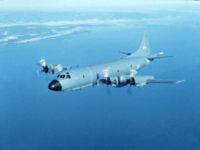CP-140 Aurora: Difference between revisions
HTFUAlberta (talk | contribs) No edit summary |
m (Fix Links) |
||
| (2 intermediate revisions by 2 users not shown) | |||
| Line 10: | Line 10: | ||
| | | | ||
{|align="center" | {|align="center" | ||
|align="left"|<div style="font-size: 80%"> | |align="left"|<div style="font-size: 80%">Length: 35.61 m</div> | ||
|- | |- | ||
|align="left"|<div style="font-size: 80%"> | |align="left"|<div style="font-size: 80%">Wingspan: 30.37 m</div> | ||
|- | |- | ||
|align="left"|<div style="font-size: 80%"> | |align="left"|<div style="font-size: 80%">Height: 10.30 m</div> | ||
|- | |- | ||
|align="left"|<div style="font-size: 80%"> | |align="left"|<div style="font-size: 80%">Weight 27,892 kg</div> | ||
|- | |- | ||
|align="left"|<div style="font-size: 80%"> | |align="left"|<div style="font-size: 80%">Engine: 4 Alison T-56-A-14-LFE </div> | ||
|- | |- | ||
|align="left"|<div style="font-size: 80%"> | |align="left"|<div style="font-size: 80%">Max Speed: 750 km/h</div> | ||
|- | |- | ||
|align="left"|<div style="font-size: 80%"> | |align="left"|<div style="font-size: 80%">Cruising Speed: 648 km/h</div> | ||
|- | |- | ||
|align="left"|<div style="font-size: 80%"> | |align="left"|<div style="font-size: 80%">Ceiling: 10,668 m</div> | ||
|- | |- | ||
|align="left"|<div style="font-size: 80%"> | |align="left"|<div style="font-size: 80%">Range: 9,266 km</div> | ||
|- | |- | ||
|align="left"|<div style="font-size: 80%"> | |align="left"|<div style="font-size: 80%">Crew: 2 pilots, 4 navigator, 1 flight engineer, 3 AESOP's</div> | ||
|- | |- | ||
|align="left"|<div style="font-size: 80%"> | |align="left"|<div style="font-size: 80%">Years Procured: 1980</div> | ||
|- | |- | ||
|align="left"|<div style="font-size: 80%"> | |align="left"|<div style="font-size: 80%">Quantity: 18</div> | ||
[http://www.airforce.forces.gc.ca/equip/cp-140/intro_e.asp] | [http://www.airforce.forces.gc.ca/equip/cp-140/intro_e.asp] | ||
| Line 39: | Line 39: | ||
|} | |} | ||
|} | |} | ||
In order to patrol the world's longest coastline, Canada needs an Aircraft with some very long legs. | |||
Meet the Aurora, a long-range patrol Aircraft able to fly over 9,000 km/5,000nm without refueling and Canada's only strategic airborne land and sea surveillance Aircraft. | |||
Designed originally for anti-submarine warfare, the Aurora remains capable of detecting the latest generation of stealthy submarines. But its multi-role capability means it's also ready to tackle a variety of different missions. | |||
[http://www.airforce.forces.gc.ca/equip/cp-140/intro_e.asp] | |||
==Modernization== | |||
The Aurora Incremental Modernization Project (AIMP) was begun in 1998, and is planned to run until 2010, with an overall budget of $1.45 billion. AIMP is an amalgamation of 23 individual projects, grouped in four chronologically consecutive “blocks”, and overseen by the Aurora Project Management Office. Among the goals is to turn the CP-140 into a multimission platform that can provide over-land surveillance, reconnaissance and intelligence-gathering capabilities in addition to its traditional maritime roles. | |||
It is estimated that AIMP-improved CP-140s will be able to operate until approximately 2025. | |||
===Block 1=== | |||
Block I of the AIMP covers replacement/upgrade of HF (high-frequency) radio gear, cockpit voice recorder, flight data recorder, and the SRX antennae associated components. | |||
===Block 2=== | |||
Block II comprises an upgrade of the Navigation Capability Group (including a new horizontal situation indicator and flight direction indicator, Global Positioning System, inertial navigation system, autopilot, radar altimeter, transponder, and Aircraft Collision Avoidance System). | |||
===Block 3=== | |||
Block III involves an upgrade to the Communication Capability Group (three new VHF/UHF radios, VHF/FM modernization, and a new satellite-communications-based radio), the Data Management System, and the Sensor Capability Group (including a new electro-optical system, electronic support measure system, magnetic-anomaly detection system, imaging radar, and operational mission simulator). | |||
===Block 4=== | |||
Block IV is tentatively planned to incorporate a new Defensive Early Warning System (DEWS) and a stand-off air-to-surface missile system, but final approval for these elements has not yet been given. Block IV will also include extensive software upgrades for Block III system elements. | |||
[http://www.airforce.forces.gc.ca/equip/CP-140/future_e.asp] | |||
[[category:Fixed Wing Aircraft]] | |||
Latest revision as of 23:15, 2 December 2006
In order to patrol the world's longest coastline, Canada needs an Aircraft with some very long legs.
Meet the Aurora, a long-range patrol Aircraft able to fly over 9,000 km/5,000nm without refueling and Canada's only strategic airborne land and sea surveillance Aircraft.
Designed originally for anti-submarine warfare, the Aurora remains capable of detecting the latest generation of stealthy submarines. But its multi-role capability means it's also ready to tackle a variety of different missions.
Modernization
The Aurora Incremental Modernization Project (AIMP) was begun in 1998, and is planned to run until 2010, with an overall budget of $1.45 billion. AIMP is an amalgamation of 23 individual projects, grouped in four chronologically consecutive “blocks”, and overseen by the Aurora Project Management Office. Among the goals is to turn the CP-140 into a multimission platform that can provide over-land surveillance, reconnaissance and intelligence-gathering capabilities in addition to its traditional maritime roles.
It is estimated that AIMP-improved CP-140s will be able to operate until approximately 2025.
Block 1
Block I of the AIMP covers replacement/upgrade of HF (high-frequency) radio gear, cockpit voice recorder, flight data recorder, and the SRX antennae associated components.
Block 2
Block II comprises an upgrade of the Navigation Capability Group (including a new horizontal situation indicator and flight direction indicator, Global Positioning System, inertial navigation system, autopilot, radar altimeter, transponder, and Aircraft Collision Avoidance System).
Block 3
Block III involves an upgrade to the Communication Capability Group (three new VHF/UHF radios, VHF/FM modernization, and a new satellite-communications-based radio), the Data Management System, and the Sensor Capability Group (including a new electro-optical system, electronic support measure system, magnetic-anomaly detection system, imaging radar, and operational mission simulator).
Block 4
Block IV is tentatively planned to incorporate a new Defensive Early Warning System (DEWS) and a stand-off air-to-surface missile system, but final approval for these elements has not yet been given. Block IV will also include extensive software upgrades for Block III system elements.
